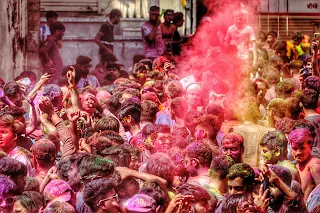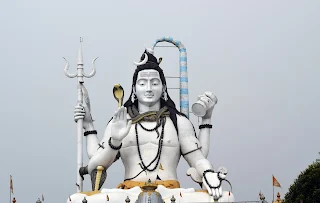Five harvest festivals in India
Makar Sankranti
- Gujarat: Udturna, celebrated in the International Kite Festival, is the time when people of all age groups jump onto their rooftops and open fields, flying kites happily and making a riot of colors in the skies.
- Tamil Nadu: Pongal, being a four-day-long harvest festival, is a way of offering thanks to the Sun God for the abundant harvest. The term Pongal means 'overflowing' in Tamil, symbolizing fullness, abundance, or prosperity.
- Punjab and Haryana: Lohri marks the end of winter and the start of longer days in celebration of the sugarcane harvest and other crops. Songs are sung while communities gather around bonfires, throwing sesame seeds, popcorn, and jaggery into the flames as an offering of thanksgiving to nature.
- Assam: Magh Bihu or Bhogali Bihu consists of communal feasts, bonfires, and games, and this harvest festival practice of the region reflects an agrarian culture.
- West Bengal: Poush Parbon or Gangasagar Mela is celebrated with a holy dip and prayers offered to sacred Kapil Muni Ashram on the delta where the river Ganga meets the Bay of Bengal. These are just a few of the regional variations that reflect the multicultural spirit of India, with each state adding its own uniqueness to Makar Sankranti.
Significance
Customs and Traditions:
- Kite-flying: In Gujarat and Maharashtra, colorful kite-flying festivals light up the skies, symbolizing sheer freedom and joy.
- Culinary Aspect: The spring festival is nearly synonymous with sweets made of sesame seeds and jaggery, such as 'tilgul' and 'chikki, ' to give warmth and energy during the winter.
- Cultural Differences: This festival, known in the various states of India as Pongal in Tamil Nadu, Uttarayan in Gujarat, and Maghi in Punjab, involves similar yet diversely rich traditions of cultural significance.
Pongal
Significance
- Bhogi Pongal: The first day consists of getting rid of old belongings and celebrating new possessions, which signifies a fresh start.
- Surya Pongal: The second day is dedicated to the Sun God and involves offering newly harvested rice cooked in milk and jaggery, which is referred to as 'Pongal.'
- Mattu Pongal: For the third day, cattle are respected for their service in agriculture; they have garlands hung around their necks and their horns painted.
- Kaanum Pongal: The fourth and last day is meant for gatherings and community feasts, which strengthen the relations among families.
Baisakhi
Significance
- Gurdwara Visits: Devotees pay visits to the gurdwaras or Sikh temples for prayer and to eat langar, or community meals.
- Folk Dances: The performing of folk dances such as Bhangra and Gidda with gusto speaks for the restiveness of the agricultural community.
- Fair and Procession: Festive fairs, called melas, display traditional music and dance and offer local food to foster spirit in the community.
Lohri
- Bonfires: The community gathers around the bonfire and throws sesame seeds, popcorn, and jaggery into the flames while singing traditional songs, signifying offering nature gratitude.
- Festive Foods: The food made of 'makki di roti' and 'sarson da saag' depicts seasonal produce.
- Dance and Songs: Traditional dance forms such as Bhangra and folk songs take place in the evening to rejoice in the agrarian life.
Onam
Place of celebration: Kerala Importance: Onam is a ten-day festival signifying the homecoming of the legendary king Mahabali and the harvest season, with a rich cultural heritage depicted in Kerala. Various traditions followed:- Pookalam: Elaborate flower arrangements are placed at the entrances of homes symbolizing prosperity and welcoming the king.
- Onam Sadhya: On the banana leaf, a lavish vegetarian feast, including a variety of traditional dishes, typically embodies the culinary diversity of Kerala.
- Vallam Kali: With snake-boat races on the backwaters, Kerala becomes a habitat to draw the crowds again and again, signifying the maritime culture of the state.
Frequently Ask Questations
Strengthening Community: Such festivals bind people in unity as people come together to share food, perform community duties, and celebrate so that social ties become stronger.
Preserving Cultural Traditions- During harvest festivals, many traditional dances, songs, and rituals are performed, which help to maintain and pass on the cultural heritage.







